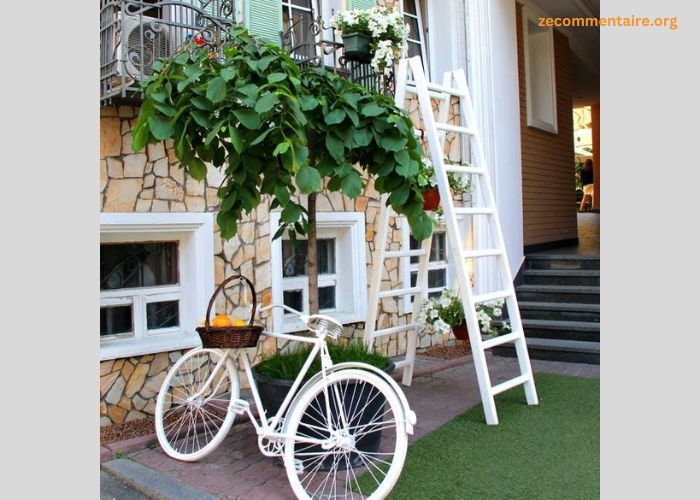As the morning sun spills its golden light onto your urban balcony or suburban window ledge, there’s a charming transformation that awaits – your window box, bursting with a vibrant array of blooms and greenery, becomes a miniature garden oasis.
But how do you put together the window box garden of your dreams? We can help you out.
Read on to learn about the best plants for window boxes.
Petunias
Petunias are prolific bloomers, producing masses of colorful flowers throughout the growing season. Their blooms come in lots of colors, including shades of pink, purple, red, white, and even bi-color varieties. That allows you to create visually stunning displays in your window boxes.
Petunias produce nectar-rich flowers that attract pollinators like bees and butterflies to your window box garden, helping to promote biodiversity and support local ecosystems.
Buy plants like petunias for your window boxes today.
Impatiens
If you have window boxes in shade, look at impatiens. These flowers are well-known for their ability to thrive in shady conditions, making them perfect for window boxes located on north-facing or shaded walls where other sun-loving plants might struggle.
Most impatiens varieties have a compact growth habit, making them suitable for small or narrow window boxes. They typically reach heights of 6 to 18 inches, making them perfect for creating lush, full displays without overwhelming the space.
Verbena
Verbena thrives in full sun and requires at least 6-8 hours of direct sunlight per day to achieve its full blooming potential. This makes it perfect for window boxes located in sunny or partially sunny areas of your home.
They’re an option when you’re considering cascading flowers for window boxes. Many verbena varieties have a trailing growth habit, making them ideal for cascading down the sides of window boxes. This trailing effect adds depth and interest to your arrangements, creating a lush and full look.
Creeping Jenny
While Creeping Jenny is primarily grown for its lush foliage, it also produces small, yellow flowers in late spring and early summer, adding some extra color to your window box displays.
Creeping Jenny can be easily propagated by stem cuttings or division, allowing you to expand your planting or share with friends and neighbors.
Sweet Alyssum
Sweet Alyssum produces clusters of tiny, sweet-smelling flowers that are great for bringing in pollinators. The fragrance adds some extra sensory delight to your window boxes, especially during the warmer months.
Sweet Alyssum is known for self-seeding, meaning it may come back year after year if allowed to drop its seeds. This can save you time and effort in replanting your window boxes annually, as long as you don’t mind a slightly more naturalized look.
Licorice Plant
Licorice plant is a perennial in warmer climates but is often grown as an annual in colder regions. However, it’s relatively easy to overwinter indoors or propagate from cuttings, allowing you to enjoy its beauty year after year.
The plan has attractive, silver-gray foliage that adds a touch of elegance and sophistication to your window box displays. The leaves are fuzzy and velvety to the touch, providing texture and visual interest.
In addition to being grown for their ornamental foliage, Licorice Plants are sometimes used for their aromatic qualities.
The leaves have a mild licorice scent when crushed, hence the plant’s common name. However, this scent is not as strong as that of true licorice (Glycyrrhiza glabra).
Pansies
Pansies are cool-season annuals, meaning they thrive in cooler temperatures, making them ideal for window boxes in spring and fall. They can withstand light frost, allowing you to enjoy their blooms even as temperatures begin to drop.
Pansies are known for their distinctive “faces,” characterized by two upper petals overlapping two lower petals, resembling a smiling face.
These petals come in many amazing colors, including shades of purple, yellow, orange, blue, red, white, and bi-color combinations. Some pansy varieties also feature contrasting blotches or dark markings on their petals.
Pansies are available in a wide range of varieties, including large-flowered pansies, miniature or multiflora pansies, and trailing pansies. Large-flowered varieties are known for their showy blooms, while miniature pansies are more compact and suitable for smaller spaces.
Trailing pansies have a trailing growth habit, making them perfect for hanging baskets or cascading over the edges of containers.
Dwarf Marigolds
Dwarf marigolds are fantastic plants for window boxes, offering numerous benefits that make them stand out as excellent choices.
Marigolds are known for their natural pest-repellent properties, making them less attractive to deer, rabbits, and other garden pests. This can help protect your window box plants from damage and ensure their longevity throughout the growing season.
When planting dwarf marigolds in window boxes, make sure that the soil is well-drained and stay on top of regular watering to establish the plants.
You can combine dwarf marigolds with other sun-loving annuals to create beautiful and colorful window box displays that enhance your home’s exterior and provide seasonal interest throughout the growing season.
Nasturtiums
Nasturtiums produce flowers in shades of red, orange, yellow, and even creamy white. These bright blooms add visual interest to your window box.
Nasturtiums are quick-growing plants, which means you’ll see results relatively soon after planting them in your window boxes. Their fast growth can help fill out the space and create a lush, full look.
Both the flowers and leaves of nasturtiums are edible, adding a unique flavor to salads and other dishes. This dual-purpose makes them not only visually appealing but also functional.
Sweet Potato Vine
Sweet potato vine (Ipomoea batatas) is an excellent choice for window boxes due to its vigorous growth, attractive foliage, and versatility.
The foliage of sweet potato vine is its main attraction. Leaves can vary widely in color, ranging from green to chartreuse, purple, and even variegated combinations.
Best Plants for Window Boxes: Start Gardening Today
There are lots of options when it comes to the best plants for window boxes. If any of these have sounded appealing, it might be time to start planting your own garden.
Do you want more gardening advice? Look through some of our other amazing articles for more.





